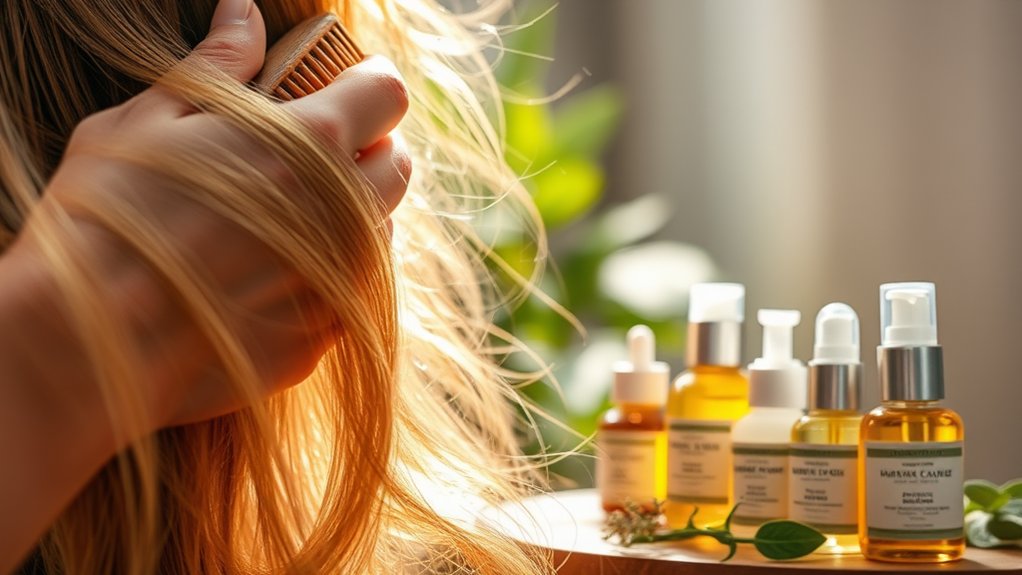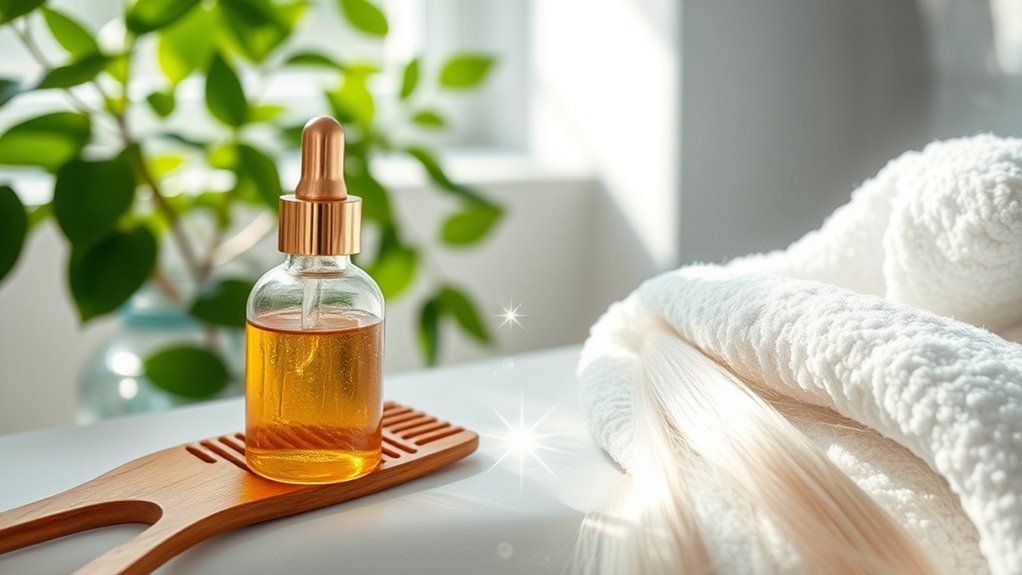Brushing Habits That Made My Hair Thicker
If you’re seeking thicker, healthier hair, your brushing habits might be the key. By choosing the right brush and establishing a consistent routine, you can dramatically improve your hair’s texture. It’s not just about the act of brushing; it’s also about how you do it. The methods you use and the products you incorporate can make a significant difference. Discover the essential techniques and practices that could transform your hair’s health.
Key Takeaways
- Brush hair at least twice daily to promote circulation and nourish hair follicles for thicker growth.
- Use a high-quality boar bristle brush to distribute natural oils effectively and add shine.
- Begin brushing from the ends and work upwards to prevent breakage and support thicker hair.
- Incorporate a leave-in conditioner to reduce friction and improve brush glide for healthier strands.
- Monitor hair’s condition weekly to adjust techniques as needed for optimal thickness and health.
Choosing the Right Brush
When you’re on a quest for thicker hair, choosing the right brush can make all the difference. A boar bristle brush is an excellent choice, as it distributes natural oils and adds shine.
Look for brushes with wide-spaced bristles for gentle detangling without breakage, essential for your hair care routine. Additionally, a round brush can boost volume during styling. Remember, effective brushing habits can play a significant role in your overall hair health.
Avoid plastic brushes that can cause static and create frizz. By selecting the right brush, you’re already taking steps toward improved hair health.
Establishing a Regular Brushing Routine
A regular brushing routine is crucial for achieving thicker hair and maintaining its health. Aim to brush your hair at least twice a day—once in the morning and once before bed.
This frequency promotes circulation to your scalp, helping to nourish hair follicles. Choose a time that suits you, and stick to it as part of your daily ritual.
Don’t forget to brush for at least five to ten minutes each session, allowing the natural oils from your scalp to distribute evenly. Additionally, using effective brushing techniques can significantly reduce hair fall, enhancing your overall hair vitality.
Consistency is key, so make it a habit, and you’ll begin to witness the benefits over time.
Techniques for Gentle Brushing
Brushing your hair regularly is just the start; how you do it matters too.
To gently brush, always begin at the ends, working your way up to minimize breakage. Use a wide-tooth comb or a soft-bristle brush, which reduces friction and prevents snagging.
Keep your strokes steady and light; don’t yank through tangles. Consider sectioning your hair for a more manageable approach, especially if it’s long or thick.
Incorporate a leave-in conditioner to help glide the brush through. Additionally, incorporating a regimen of regular trims will significantly help in preventing split ends. By practicing these techniques, you’ll nurture your strands and encourage thicker, healthier hair over time.
Incorporating Brushing Into Your Hair Care Regimen
While many people focus on shampooing and conditioning, integrating brushing into your hair care regimen is equally crucial for maintaining healthy locks.
Brush your hair at least once a day to distribute natural oils from the scalp, which nourishes your strands. Choose a high-quality brush suited for your hair type to avoid damage.
Consider brushing before bed to reduce tangles and improve circulation to your scalp while you sleep. Additionally, use gentle strokes to untangle any knots, ensuring you don’t break your hair.
Incorporating this simple step won’t only enhance thickness but also promote overall hair vitality. Furthermore, regular brushing can complement scalp massage techniques, as both methods stimulate blood flow, potentially accelerating hair growth.
Monitoring Results and Adjusting Habits
As you incorporate brushing into your hair care routine, it’s essential to monitor the results to ensure you’re on the right track.
Keep track of your hair’s thickness, shine, and overall health. Take notes weekly, noting any changes you’ve observed. If you aren’t seeing improvement, consider adjusting your brushing technique or frequency.
Experiment with different brush types to find what works best for your hair. Don’t hesitate to consult a stylist for professional advice.





